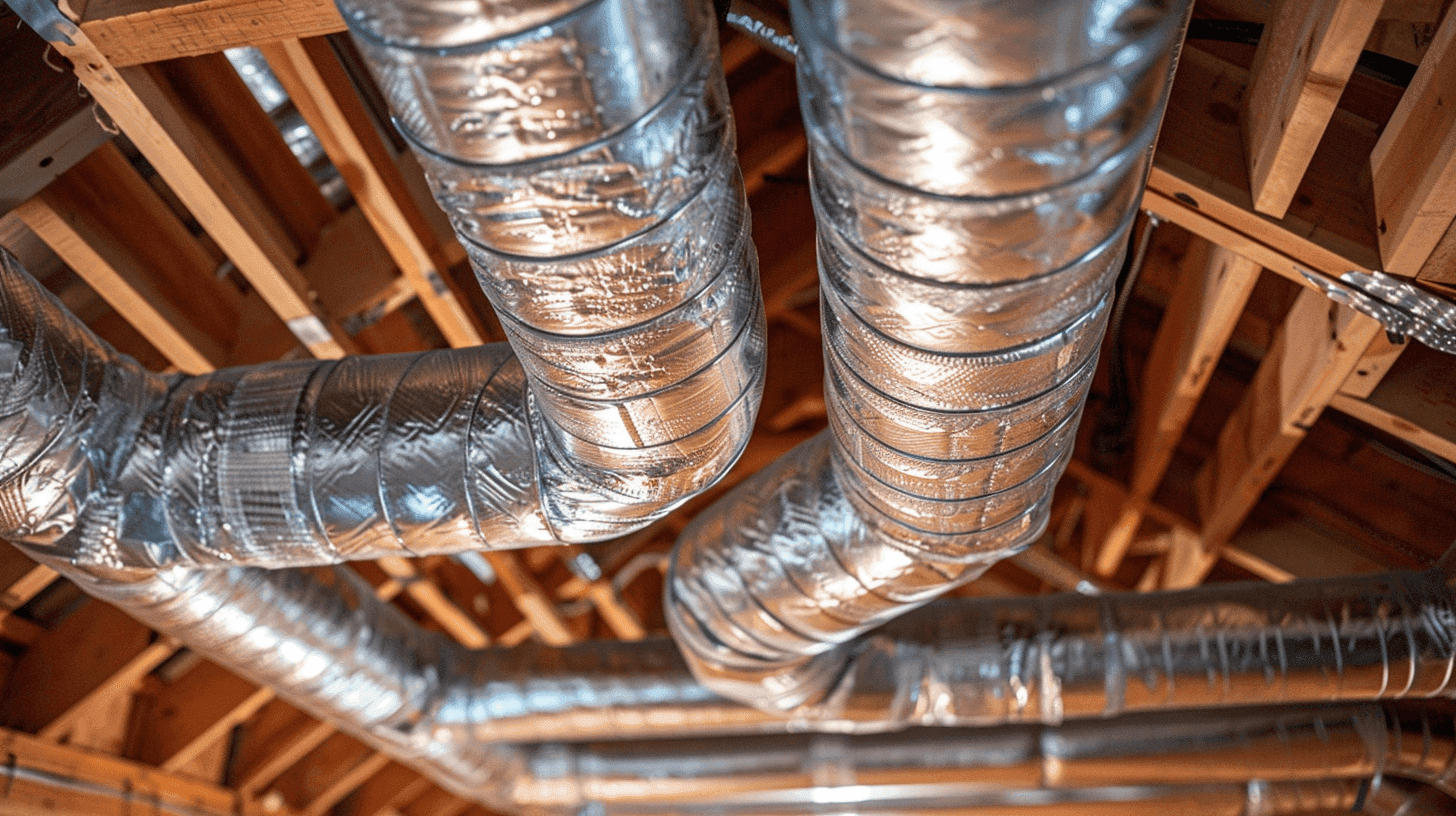What Is Ductwork and How Does It Work?

Have you ever wondered how conditioned air reaches every corner of your home to keep you and your family safe and comfortable? The secret lies within a network of tubes called ductwork.
Often hidden out of sight and out of mind, ductwork – perhaps the unsung hero of your HVAC system – plays a vital role in ensuring your home stays comfortable year-round. HVAC.com explains the role of your home’s ductwork, what they’re made of, and how they work.
The Main Components of an Air Duct System
Without getting too technical, ductwork is best described as a network of metal or flexible pipes that transport conditioned air from your HVAC system to air vents, which then distribute the air into your home’s living areas. Ducts typically snake through attics, crawlspaces, or basements – delivering cool air in summer and warm air in winter.
Here’s a breakdown of the key components of a ductwork system:
- Main Trunk: Envision the main trunk as the highway of your duct system. It’s the largest duct and receives conditioned air directly from the heating and air conditioning unit.
- Branches: Like branches on a tree, these smaller ducts branch off from the main trunk, directing air towards different zones or floors of your house.
- Supply Ducts: These ducts carry the conditioned air from the main trunk and branches to individual rooms.
- Return Ducts: These ducts collect stale air from rooms and funnel it back to the HVAC unit for filtering and reconditioning.
- Registers and Grilles: These are the openings in walls, floors, or ceilings where conditioned air enters and exits rooms. They often have adjustable louvers to control airflow direction and volume.
Does My HVAC System Need Ducts?
While ductwork is a key component in many forced air HVAC systems, it’s not universally used. The most common types of ducted systems include split systems, where the heating and cooling units are separate, and packaged systems, where both functions are housed in a single unit. Furnaces, air conditioners, and air-source heat pumps all require ductwork. Geothermal systems may also use ductwork as their distribution system.
As their name implies, ductless mini-splits do not require ducts. They deliver conditioned air directly through individual wall-mounted units.
How Air Travels Through Ducts
Here’s a simplified look at the journey air takes within your ductwork:
- Intake: Unconditioned air is pulled into the return ducts through a return grille before being circulated to the HVAC unit.
- Filtering: The air passes through a filter that removes dust, allergens, and other impurities.
- Heating/Cooling: The air is heated or cooled, depending on the season.
- Distribution: The conditioned air travels through the main trunk, branch ducts, and supply ducts.
- Delivery: Conditioned air enters your living spaces via vents and registers.
- Return: Stale air is drawn back into the return ducts through grilles, and the cycle repeats.
Types of Ductwork Materials
Ductwork comes in various materials, each offering their own set of pros and cons:
- Sheet Metal: This is the most traditional and durable option, offering excellent fire resistance and longevity. However, it’s also the most expensive and requires installation by a skilled HVAC contractor.
- Fiberglass: Fiberglass ductwork is a budget-friendly option that’s lightweight and easy to install. However, it’s prone to tears and leaks and may not be as efficient as metal ducts.
- Flexible Ductwork: Made from flexible insulated tubes, flexible ductwork is commonly used for short runs or tight spaces. While convenient, it can restrict airflow if not properly installed.
Choosing the right ductwork material depends on your budget, layout, and desired efficiency level. Speaking with an HVAC professional is recommended to help you choose the type of ductwork that works best for your home and budget.
Maintaining Optimal Ductwork Performance
Leaking ducts can cause energy waste, poor indoor air quality, and reduced comfort. Signs of ductwork include uneven room temperatures or high energy bills. A technician can seal any leaks they find.
Ensure your ducts are properly insulated, especially in unconditioned spaces like attics or crawl spaces. This prevents conditioned air from losing heat or coolness before reaching its destination.
Many companies offer duct cleaning services and recommend periodic cleaning. However, the U.S. Environmental Protection Agency recommends duct cleaning only on an as-needed basis, such as in cases of substantial visible mold growth, vermin infestation, or severe clogs that result in particles being released into living areas. By maintaining your ductwork system, you can ensure optimal efficiency, improved indoor air quality, and a comfortable living environment.